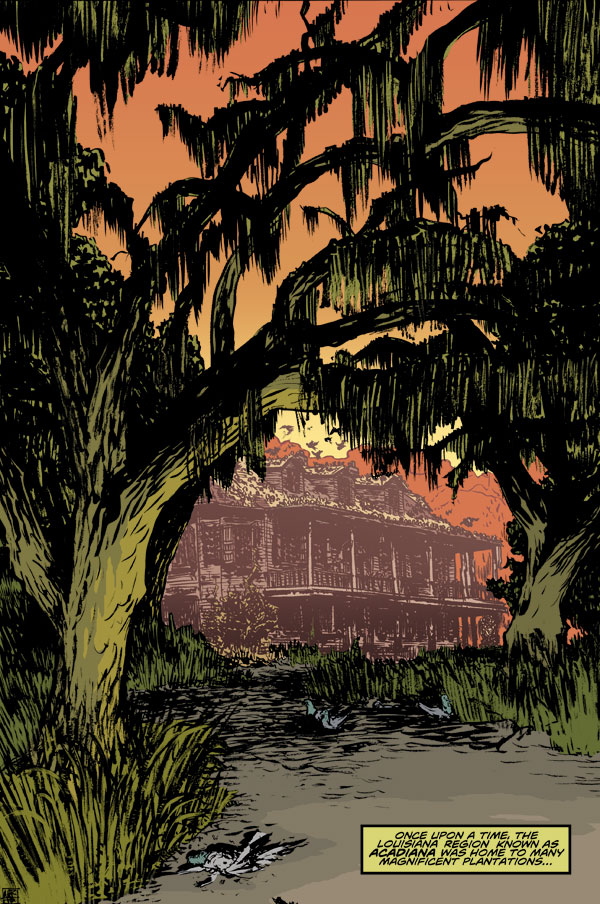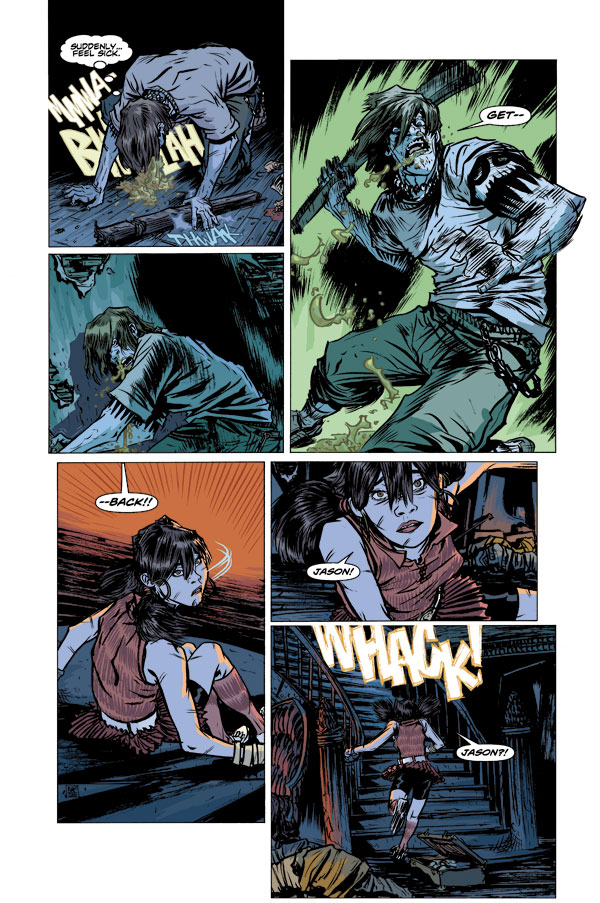 There are few creators that can bring their own brand and style into a story without taking away from the core plot. Joe R. Landsdale, however, has been able to craft stories that are haunting in all the right ways. He's a multiple award-winning author who has written such hits as Bubba Ho-Tep, stories from Masters of Horror, and some of the best episodes of Batman: The Animated Series. He, along with Timothy Truman, created one the grittiest Conan saga's ever -- Conan and the Songs of the Dead.
There are few creators that can bring their own brand and style into a story without taking away from the core plot. Joe R. Landsdale, however, has been able to craft stories that are haunting in all the right ways. He's a multiple award-winning author who has written such hits as Bubba Ho-Tep, stories from Masters of Horror, and some of the best episodes of Batman: The Animated Series. He, along with Timothy Truman, created one the grittiest Conan saga's ever -- Conan and the Songs of the Dead.Now, Dark Horse is proud to release another Robert E. Howard adaptation with Joe at the helm -- Pigeons from Hell -- with art by Nathan Fox and colored by the famous Dave Stewart. Dark Horse recently got to speak with Joe, who, just so you know, is also a bad-ass in the martial arts relm as well.
Dark Horse: Pigeons from Hell is a Robert E. Howard original story. What is it about the original that drew you to update this horror classic?
Joe Lansdale: I first became aware of the story when I was a kid and saw it adapted to Thriller, which was at the time damn scary, and nothing surpassed it for real terror on TV for many years. Later, I came across the story and loved it. I was talking to the people at Paradox Films, who at the time were discussing me doing a script for them, and in talking this story came up. Since they were connected to Dark Horse, they wanted an updated version for film, so I ended up doing it. I wanted to do it traditionally, actually, but since those versions had been done they wanted something updated—and so I gave it a run.
DH: What obstacles did you come across when trying to modernize the story?
JL: I think nearly all stories suit their own time and medium, but I also thought it was a way to give it a fresh look. I used the story in some of my creative-writing classes, and many readers found it tedious and overwritten. I see their point about overwritten, as Howard was a pulp writer, and a great one, but I never found it tedious—but I decided to give it a bit of a boost. I’m sure purists will moan and cuss and cry, as some did with the Conan story I did, but most readers responded to it positively, and it may have led them to read the source material.

DH: Like Robert E. Howard, you were born in the American southwest—specifically, you were both born in Texas. Do you believe there is something about Texas and the Southwest that creates dark writers?
JL: I wasn’t born in the Southwest, though I was born in Texas. Texas is big. I was born in East Texas, which is much more like the South than the Southwest. I think Texas writers, especially in the past, were more marooned from society than some, and it led to us having wilder imaginations—at least those of us who were already imaginative. When I was growing up I found the small towns I lived in fairly bleak. I don’t know, but I did then, and books and comics and movies were a big escape, and even more so was my own imagination. I’m sure Howard experienced something similar. I never met anyone besides myself growing up who wanted to be a writer or even understood how it was done. You meet a lot of people interested in that now. Not then.
DH: What is it about horror tales that intrigues you as an author?
JL: I think it’s a way to think about mortality, death. A sort of preparation for what’s to come, though hopefully without monsters involved.
DH: In your opinion, what elements are needed to create a character that embodies fear?
JL: Create characters who interest you, and you will interest the readers, and they will be concerned about what happens to those characters. They don’t have to like them, just be intrigued by them.

DH: What’s the scariest thing about pigeons?
JL: Well, it’s not the pigeons. In fact, a lot of people find that whole thing silly now—but when I was growing up, omens like that were part of the background of many country people. I think it’s the idea that someone is in the house unseen, and they can brandish an ax. That simple.
DH: You’ve developed a branch of martial arts known as Shen Chaun. Like the combination system of the Korean martial art Kuk Sool Won, your system gathers a variety of different elements into a single practice. Do you see any parallels between this and your writing?
JL: Yes. Discipline. Economy of motion. The ability to innovate.
DH: Have you progressed to the level where you can kill a man with pure thought?
JL: No one has, unless it’s a politician whose thoughts can be turned into action by morons who buy that crap, or religious leaders who sell the same sort of thing in a different suit.
DH: What about a pigeon?
JL: Pigeons can shit on things, and that’ll do me on the matter of pigeons.
DH: What’s the best weapon to use against an army of zombie ninjas?
JL: A lot of people who are good shots.
